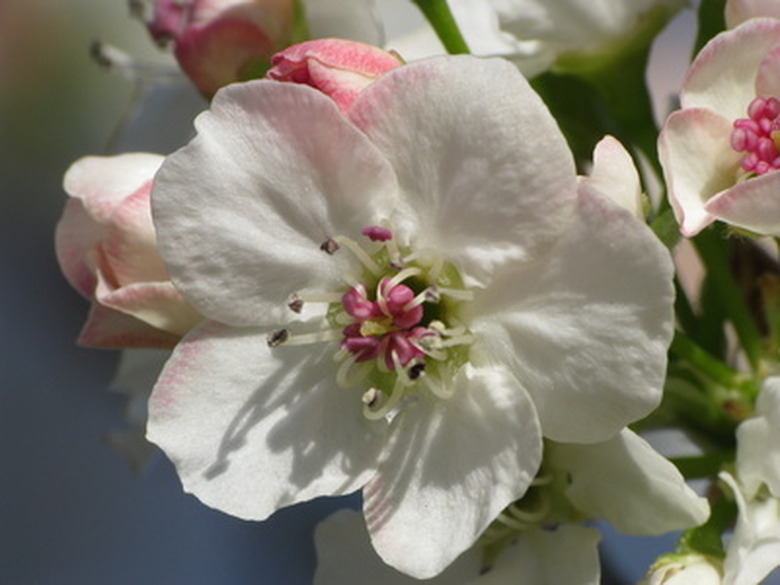The Root System Of The Fruitless Bradford Pear
Bradford pear trees are ornamental, usually fruitless varieties of spring-flowering trees. They can grow to be 40 feet tall or more and make stately landscape specimens. However, they don't retain much structural integrity as they age, especially in their massive limbs. Their (much smaller) root system, though rife with lateral surface roots, is also problematic in older specimens.
History
These trees were once recommended in large areas of the country for their beautiful spring blooms and quick, stately growth. This was primarily during the 1960s and '70s, shortly after the tree was introduced from China and then bred or grafted with American varieties of ornamental pear trees. The problems that modern home-owners often find with the trees (and especially the roots) didn't show up until the trees got much older. This is why Bradford pears are rarely recommended for long-term planting (25 years or more) nowadays.
- Bradford pear trees are ornamental, usually fruitless varieties of spring-flowering trees.
- The problems that modern home-owners often find with the trees (and especially the roots) didn't show up until the trees got much older.
Grafting and Suckers
Many sources recommended that Bradford pears be grafted onto the roots of another type of ornamental pear. These graftings would sometimes fail, leading to upper parts of the tree dying off and falling while the roots of the other ornamental tree started to sucker into long, spindly forests. Non-grafted Bradford pears can still produce suckers if their surface roots are damaged, according to Clemson Cooperative Extension.
Surface Roots and Girdling
Bradford pears are prone to surface roots and will grow right back up through soil and sod thrown over them, according to the University of Arizona Cooperative Extension. If the tree was grown in a container for too long, or if it was planted bare-root in a small hole, the roots may have girdled. This means that they grow in a circle, unable to break through their confinement, and over the years the circular roots grow so thick that they cut off the trunk. Roots like this should be loosened or, if necessary, removed before planting, according to Bartlett Tree Research Laboratories.
- Many sources recommended that Bradford pears be grafted onto the roots of another type of ornamental pear.
- Non-grafted Bradford pears can still produce suckers if their surface roots are damaged, according to Clemson Cooperative Extension.
Diseases
Most of the same root rot diseases that affect pears can also damage a Bradford pear, including Texas root rot (also known as cotton root rot). These diseases crop up when the roots sit in wet soil for too long. Planting your Bradford pear in well-drained soil or on a slope will usually be sufficient to keep these from being a problem. Texas root rot has no reliable remedy once it's established, says Arizona Extension Plant Pathology.
Top-Heavy
Bradford pears are fast-growing trees with many heavy branches. The roots, by comparison, are smaller and not terribly strong. In areas prone to storms, large mature trees have been known to blow over. If you have a mature tree, thin out some of the larger branches to reduce the weight and provide less of a wind-trap canopy. Never top the tree (cutting the ends of all the branches or all of the top branches), since this will force the tree to flush out with new, heavy growth at the top, says Purdue Plant and Pest Diagnostic Laboratory.
- Most of the same root rot diseases that affect pears can also damage a Bradford pear, including Texas root rot (also known as cotton root rot).
- Never top the tree (cutting the ends of all the branches or all of the top branches), since this will force the tree to flush out with new, heavy growth at the top, says Purdue Plant and Pest Diagnostic Laboratory.
References
- "Growing the Bradford Ornamental Pear"; U.S. Department of Agriculture; 1968.
- Clemson Cooperative Extension: Pruning Trees
- University of Arizona Cooperative Extension: Trees – Bradford Pear
- Bartlett Tree Research Laboratories: Preventing and Treating of Tree Girlding Roots
- Arizona Extension Plant Pathology: Diseases of ornamental Pear (Pyrus kawakamii) in Arizona
